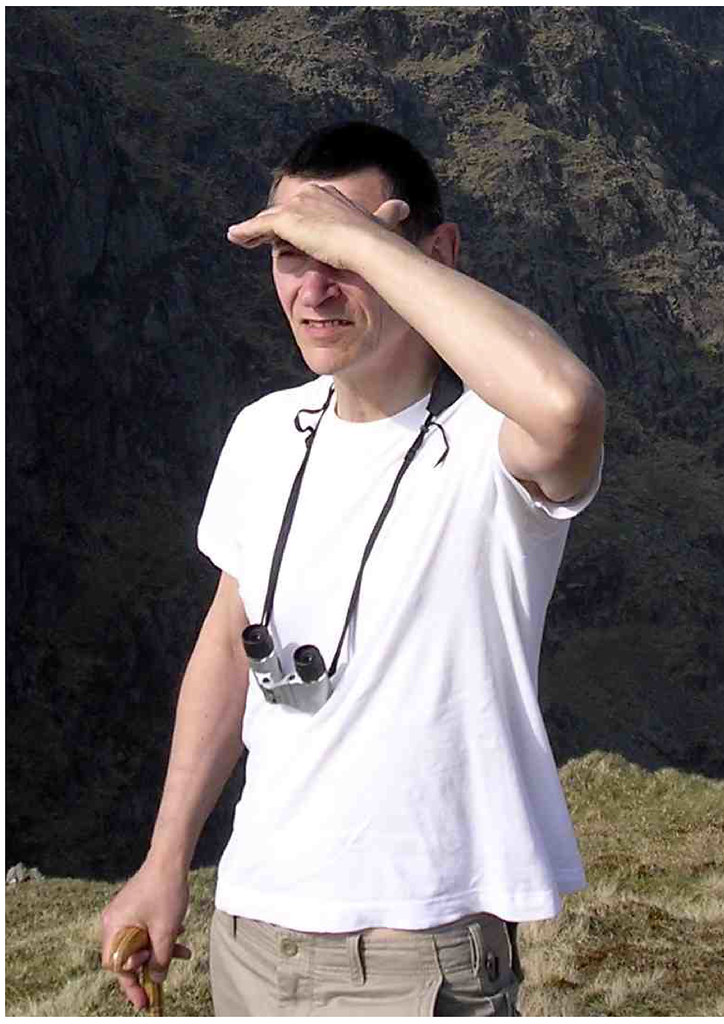I have been using both Imagon-HD photopolymer film, and photopolymer plates. The latter has been the easier to use and more reliable, but the former more fun. Both need exposing to UV light (I only have a black-light UV tube) through a line-art transparency, although in fact for the film I use images printed onto tracing paper. This is partly because the swanky do-it-all office photocopiers will no longer accept any old material to print on without your losing your insurance and maintenance contracts (and job probably). But my ancient printer works perfectly on tracing paper with no loss of quality in the exposed result.
The three images on the left all use Imagon-HD film, which is a pre-sensitised gelatine product, glued onto metal stock with water and subsequently dried. The first is nickel silver subsequently etched in dilute nitric acid with text (and showing a very clear reflection of my camera!); the second shows nickel silver on top etched with a Greek key design, the bottom is a piece of copper still bearing the exposed and developed film; the third is a longer strip of nickel silver with exposed and developed film (but not yet etched).
The Fourth shows a piece of hammered brass on top, and a sintered fine silver pendent made from a photopolymer plate mold. This plate material, again a presensitised gelatine product (with an offensive and possibly somewhat toxic smell), after exposure to UV light hardens in such a way that it does not wash out in warm water. The parts not so exposed do however wash out. The result is a 3-D mold or stamp, which I used to form the sintered silver paste. After drying, this was fired in the usual way for such materials, then enamelled with aqua enamel at about 850°C.
The fifth picture shows the same fine silver pendent before enamelling, along with two examples of etching done by students in my jewellery class using resist paint on nickel silver; and some sintered silver fired pieces formed from commercial molds.
2011-12-30
Using Photopolymers
Posted by
Paul Jelley
at
20:36
0
comments
![]()
![]()
2011-08-10
Tapered tube & Wire
I have never had any particular interest in tapered wire or tube until now, when I was shown some bangles and ear-rings, and realised I didn't know how they were made. I recently posted a query on Orchid / Ganoksin, and am currently waiting for information from more experienced metalsmiths. The picture above left shows a solid silver-plated copper hoop, tapered smoothly in both directions, two solid tapered nickel silver finger rings, and a hollow 0.5mm-thick sterling ear hoop. The picture on the right shows the ear hoop sawn in half, it can plainly be seen to have seams around the interior and exterior periphery. However I have also been shown one that has only an interior seam. Anyone give me some ideas of how these are made? By way of experiment, I hammered a 30x10mm cylindrical sprue of pewter into a double-ended spindle shape reminiscent of some of the crescent designs above, although I've not yet worked out how to hammer or press it into a crescent without damaging the cross section.
Posted by
Paul Jelley
at
10:43
2
comments
![]()
![]()
2011-05-23
Making a hollow cage
After seeing a very nice hinged ball containing a natural pearl, I thought I would try it. It was easy making a hemispherical ball from rolled copper wire; 1.6mm copper wire was rolled to 1.8x1.0mm. Three lengths of 30mm were sawn from this. Two were given a 45° chamfer at each end then soldered at one end.
The trident was then shaped round a 16mm dome and domed in a 19mm dome. This was repeated with a second set of three strips to give two half-cages. Each soldered triplet was soldered at the other end then again domed, but in a 20mm dome with an 18mm punch. The cages looked very attractive, but the hard part is to try to find a way to hinge them neatly. I subsequently soldered a small copper rectangle, about 4x5x1mm, to one end of one triplet. This however proved not thick enough for drilling for a hinge.
Posted by
Paul Jelley
at
14:54
0
comments
![]()
![]()
2011-01-26
More etching
By way of student demos, I rolled then etched the 2p bronze coin as shown sometime in the summer of 2010. This coin was one of my stash of pre-1992 coins which were entirely made of copper alloy; after that date, they are made of steel with a copper plated surface, and not so easy or safe in the rolling mill. After etching, I 'enamelled' it with coloured polyester resin. Although there are many adherents of using various acid and peroxide mixes for etching of copper, I find that ferric chloride solution (with or without the addition of citric acid) has fewer problems. In particular, no nasty fumes, and much less deterioration of the resist (which in my case is usually tinted shellac in alcohol).
Posted by
Paul Jelley
at
16:34
2
comments
![]()
![]()

